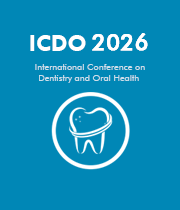Cleft Lip
A cleft lip is a common birth defect in which there is a gap in the upper lip that can range from a small notch to a large opening that extends into the nose. This condition affects the facial aesthetics of a person’s mouth, but can also affect the ability to eat, speak, or even breathe normally. It is estimated that between 2,000 and 4,000 infants are born with a cleft lip annually in the United States. Cleft lips can occur as an isolated occurrence or in combination with a cleft palate. Regardless of the type, the dentists that might be involved in treating cleft lips are pediatric dentists, oral and maxillofacial surgeons, prosthodontists, and general dentists. Treatment options for this condition can be quite extensive and may include speech intervention, orthodontic therapy, and even reconstructive plastic surgery. In terms of dental care, infants and children that have a cleft lip may need to have limited interventions to ensure that the growth and development of their teeth, jaws, and oral cavity are as normal as possible. Dental professionals may use a variety of techniques and appliances when treating individuals who have a cleft lip, such as the palatal expansion appliance, which is used to widen the cleft lip. Additionally, the dentist may recommend various dental restorative treatments, such as composite restorations and porcelain veneers to make the patient’s smile appear more aesthetically pleasing. On top of treatments for dental health, individuals with a cleft lip can benefit from specialized counseling. This counseling can cover topics such as coping with the physical changes the cleft lip may have caused, talking to people or social interactions, and addressing self-esteem issues that may arise from it. Some counseling sessions can focus solely on the individual’s coping process while others might focus more on accepting the change and working to improve self-esteem. Ultimately, there are many treatments and preventative measures that can be taken for those who have a cleft lip so that quality of life can be improved. The best course of action is to ensure that professional dental care is sought out early and regularly to keep the teeth and oral cavity as healthy as possible. Patients are also encouraged to seek out counseling for any of the emotional issues that may arise as a result.

David Geoffrey Gillam
Queen Mary University of London, United Kingdom
Christopher Turner
Spacemark Dental, United Kingdom




Title : Evaluating hygienist follow up for head and neck oncology patients in secondary care: Results from a two cycle audit
Peter Basta, Newcastle Dental Hospital, United Kingdom
Title : Atypical facial pain unravelled
Christopher Turner, Spacemark Dental, United Kingdom
Title : New treatment of temporomandibular disorder through muscle balance and muscle regeneration by activation of quiescent muscle stem cells( satellite cells) with mitochondrial dynamics
Ki Ji Lee, National Reserach Foundation & Busan Medical University, Korea, Republic of
Title : Cutaneous, Cranial, skeletal and dental defects in patients with Goltz syndrome
Ali Al Kaissi, National Ilizarov Medical Research Center for Traumatology and Orthopaedics, Russian Federation
Title : The nature and management of dental erosion in patients with bulimia nervosa
Maya Fahy, The Royal Victoria, School of Dentistry, United Kingdom
Title : A systematic review on the early detection of oral cancer using artificial intelligence and electronic tongue technology
Maryam, Kardan Dental Clinic, Iran (Islamic Republic of)